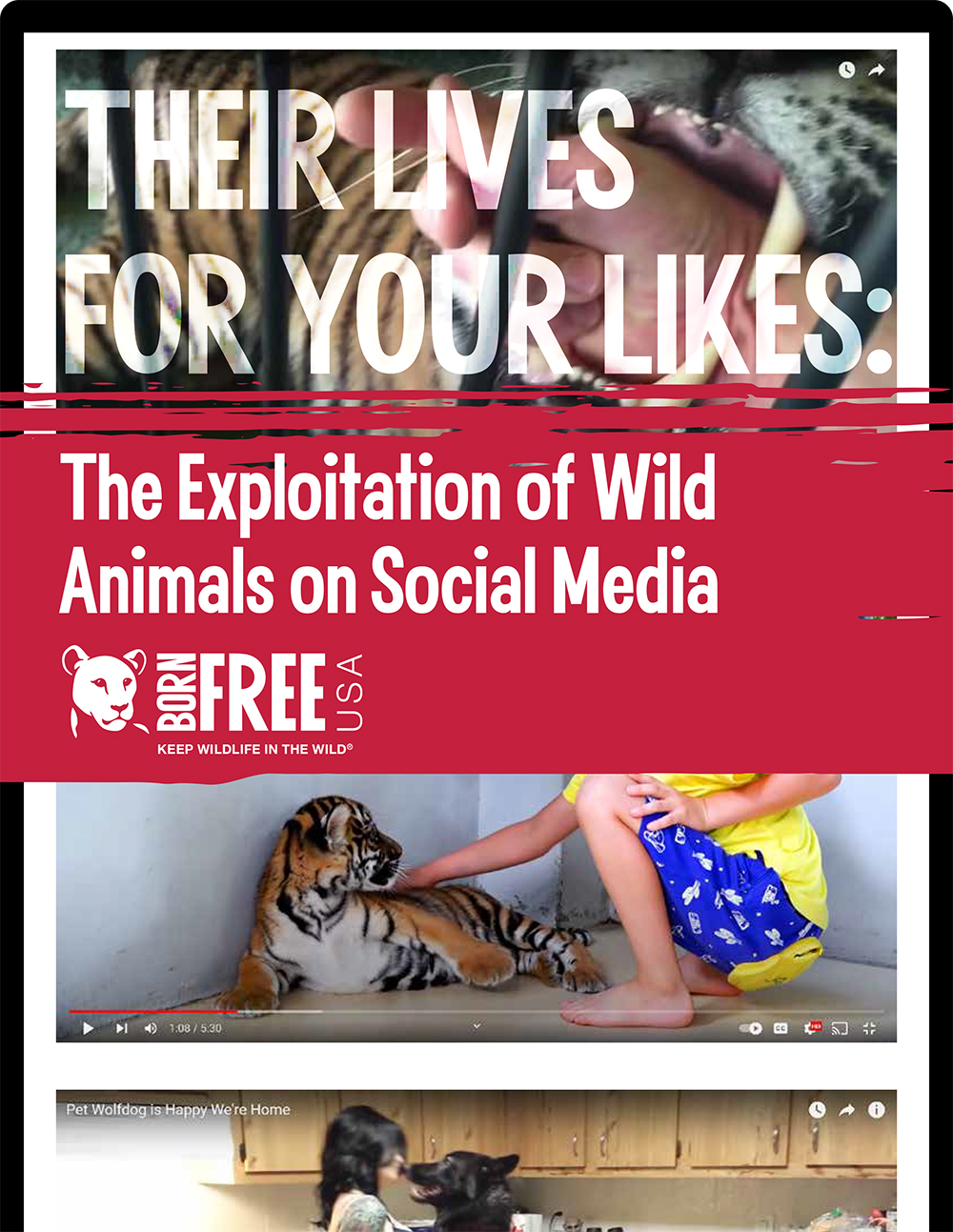Their Lives for Your Likes: The Exploitation of Wild Animals on Social Media (2022)
Since its inception, social media has developed a reputation as a “double-edged sword” that can both connect the world and spread useful information and contribute to harmful, false, or otherwise problematic content. Sadly, animals frequently fall victim to the darker side of social media and the Internet in general. While animal posts on social media may seem harmless, many representations of wild animals, particularly those involved in the private trade for pet or entertainment purposes, are extremely harmful.
To better understand the nature of the most influential social media content featuring wild animals currently circulating and develop a strategy to educate the public accordingly, this report analyzed 50 YouTube videos of five of some of the most popular exotic pets in the United States in 2022: pythons, wolf-dogs, tigers, marmosets, and grey parrots. By publicizing such information, we aim to decrease the demand for exotic animals in the private trade, reduce the number of animals entering this trade, improve individual animal welfare, and protect public health and safety by increasing social media user awareness on the fundamental animal conservation and welfare concerns associated with engaging in this exploitative content online.
Download the Report
How to Report a Problematic Post to a Social Media Platform (PDF)
If you come across harmful or abusive animal content online, we recommend reporting the video or post to the social media platform. Here is a guide for how to do so on Facebook, Twitter, Instagram, TikTok, and YouTube.

